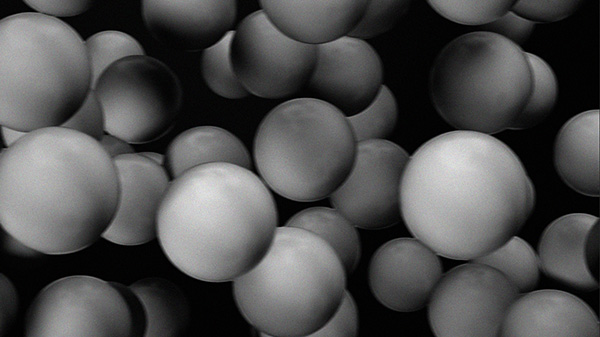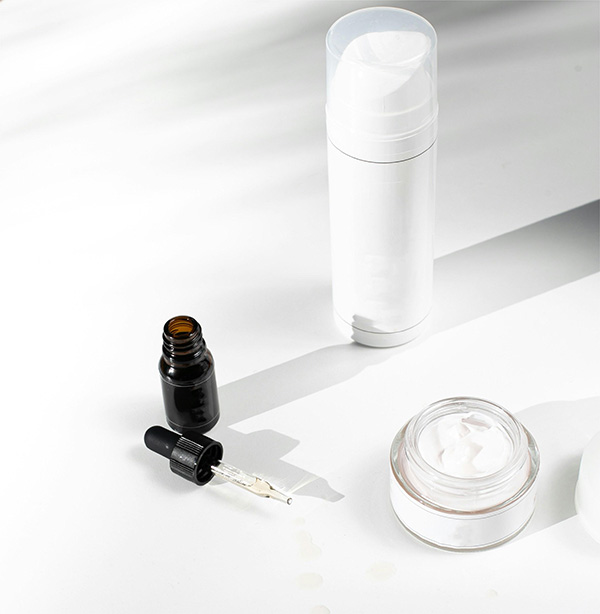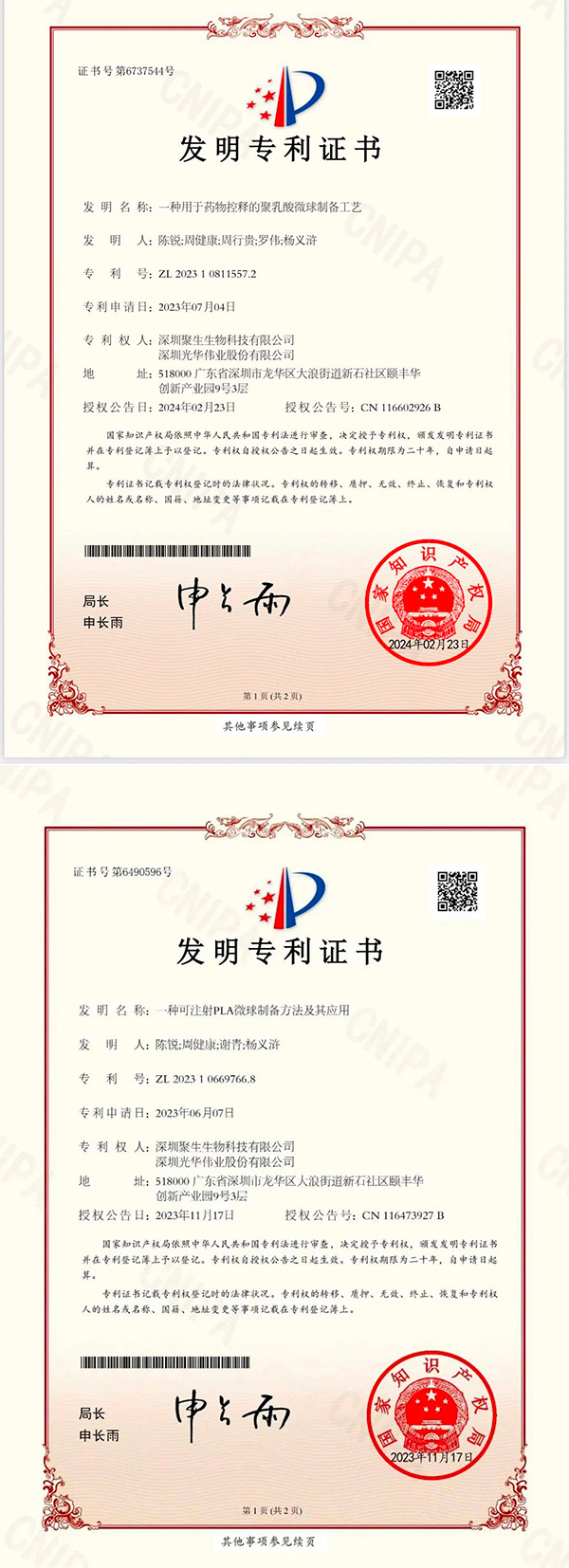Post time:
Feb-23-2024
Driven by market demand and technological innovation, the global microsphere market is rapidly developing. Among them, polylactic acid (PLA) microspheres are widely used in mid-to-high-end fields due to their excellent performance characteristics, such as medical aesthetics, daily chemical products, and batch SLS 3D printing, etc.

I.ô Biomedical Field
Polylactic acid (PLA) possesses excellent biocompatibility and biodegradability and has been clinically used for over 40 years. It is widely applied in fields such as tissue engineering, drug delivery, surgical suturing, and orthopedic repair materials. PLA microspheres, as a product with a regular shape, have three specific directions of application in the medical field.
Regenerative Medical Aesthetics Materials
PLA microspheres can be used as injectable fillers to increase skin fullness, improve wrinkles, and alleviate skin laxity. Compared to traditional fillers, they have a longer-lasting effect, maintaining their function within the body and ensuring a more enduring filling result. Furthermore, the biocompatibility of PLA microspheres allows them to naturally integrate with surrounding tissues after injection, forming natural lines and contours, avoiding the stiffness and unnatural appearance that traditional fillers might cause. PLA microsphere fillers have better biodegradability, gradually decomposing and being metabolized without causing lasting effects on the skin. Additionally, through various modification techniques, PLA microsphere fillers can be endowed with different properties, such as varying degradation cycles.

PLA microspheres can also serve as carriers for small molecule drugs, peptides, and protein drugs, widely used in the fields of controlled drug release, immunology, gene therapy, cancer treatment, ophthalmology, and more. By encapsulating drugs within PLA microspheres, precise control and targeted delivery of the drugs can be achieved, enhancing the efficacy of the drugs and reducing side effects.
PLA microspheres can also be used as scaffold materials in tissue engineering, promoting tissue regeneration and repair through combination with cells. For example, in cartilage repair, PLA microspheres can be used as scaffold materials, combined with chondrocytes for cultivation, to achieve the regeneration and repair of damaged cartilage. Additionally, PLA microspheres can be utilized in the manufacture of artificial blood vessels, artificial bones, and other tissue engineering products.
II. Daily Chemical Products
PLA microspheres, characterized by their high molecular weight, high crystallinity, high melting point, high strength, and good wear resistance, have a wide range of applications in the cosmetics industry. At the same time, due to their excellent biocompatibility, non-toxicity to the human body, and biodegradability, they are highly favored in the research and development and production of daily chemical products.
So, what are the applications of PLA microspheres in the daily chemical field?
Due to the good biocompatibility and processability of polylactic acid, it can be used as a raw material in cosmetics, such as film-forming agents, exfoliants, emulsion stabilizers, and emulsifiers, applicable in various cosmetic products. Additionally, polylactic acid is also biocompatible with the skin, causing no irritation or allergic reactions. Currently, polylactic acid microspheres are used in a variety of products.

PLA microspheres have good biocompatibility and antibacterial properties, making them suitable for the production of oral care products, such as toothpaste and mouthwash. These products can effectively remove oral bacteria, improve the oral environment, and prevent oral diseases.
Microcapsule Applications
PLA microspheres can also act as the wall material for microcapsules, encapsulating liquid or solid active ingredients inside the microspheres to form tiny capsules. This microcapsule technology can protect the active ingredients from external environmental influences, enhance the stability and shelf life of the product, and allow for the release under specific conditions, achieving targeted delivery and controlled release effects.
Household Daily Chemical Products (Suspension and Stabilizing Agents)
PLA microspheres have good suspension and stabilizing properties, which can be used as suspending and stabilizing agents in daily chemical products to improve the texture and stability of the products. For example, adding PLA microspheres to shampoos and shower gels can increase the thickness and stability of the products, enhancing the user experience and product quality.
III.ô Selective Laser Sintering (SLS) 3D Printing
In December 2023, eSUN formed an official partnership with the Material Forming and Mold Technology Laboratory of Huazhong University of Science and Technology, and related teams from Wuhan University of Technology, signing a cooperation agreement on the research and development of polylactic acid (PLA) powder for additive manufacturing.
Selective laser sintering technology, with its high production efficiency, diversity of molding materials, and the high precision and durability of printed parts, has become one of the widely used manufacturing technologies across various fields. As a laser sintering material, PLA powder is safe and non-toxic during the printing process, unlike other petroleum-based powders, and does not produce smoke or toxic gases if applied in casting. PLA powder meets the market demand for alternatives to petrochemical powder products, with a lower melting temperature that helps reduce energy consumption while also improving printing production efficiency.
ô
The combination of SLS technology and PLA powder will provide innovative solutions for fields such as engineering design and medical devices.
Functional Part Manufacturing
Models printed using PLA microspheres through SLS printing possess high strength and wear resistance, making them ideal for manufacturing functional parts. With SLS 3D printing technology, PLA microspheres can be combined with other powder materials to produce parts with superior performance, such as mechanical components and tools. PLA microspheres have a uniform particle size, which is more conducive to printing, allowing for thinner layers and better dimensional accuracy, resulting in excellent printing outcomes. Additionally, they can be blended with other powder materials to create multifunctional composite materials, offering advantages in the field of prototype/spare part manufacturing.

Due to the biocompatibility and degradability of PLA microspheres, their application in the biomedical field has garnered significant attention. With SLS 3D printing technology, complex structures of human tissues and organ models can be fabricated for testing, surgical simulation, and tissue engineering. These include tissue engineering scaffolds, orthopedic implants, organs, etc.; the implants are absorbable and degradable within the body, allowing for customized, personalized, and precise printing models, reducing production time and costs, with a broad application prospect in the medical field.
Customized Product Manufacturing
SLS 3D printing technology enables the rapid and accurate production of customized products based on customer needs. By mixing PLA microspheres with other powder materials, customized products with specific performance requirements can be manufactured, such as custom orthotic insoles, personalized jewelry, etc.
eSUNMED is primarily dedicated to the development and application of biomedical polymer materials. Currently, eSUNMED can provide customized microsphere processing services according to user needs. On one hand, it can supply customers with medical-grade raw materials of various molecular weights such as PLA, PDLLA, PCL, PLGA, PLCL, etc. Additionally, it can also customize solid microspheres of the aforementioned polymers with particle sizes ranging from 20-100ö¥m based on customer requirements.
Currently, eSUNMED has the kilogram-scale preparation capability for PCL, PLLA, PDLA homopolymers, and copolymers such as PDLLA, PLGA, PLCL. The company has mastered the polymerization technology for high molecular weight PLLA (intrinsic viscosity of 4.0 dL/g) and PCL (intrinsic viscosity of 2.0 dL/g), and is capable of polymerizing with different copolymer ratios and terminal group structures. Moreover, eSUNMED employs a unique purification processing technology to further improve various technical indicators of the product, ensuring that the products meet the implant-grade polylactic acid industry standard ‘YY/T 0661-2017′ and the requirements for related medicinal polymer excipients in the Chinese Pharmacopoeia.
Through research on cutting-edge microsphere emulsification and microfluidic technologies, eSUNMED can prepare emulsion droplets with controllable sizes and uniform diameters. Through the solidification process of these droplets, smooth-surfaced, high-roundness blank microspheres of PLLA, PCL, PLGA, etc., with a controllable D50 range of 10-100 ö¥m are produced. The particle size distribution is further narrowed through a special particle size grading process, achieving a span value of less than 0.7.

eSUNMED welcomes research institutions or enterprises with needs to contact us for product customization or new application development.
ô
We will also continue to introduce in detail the specific applications of PLA microspheres in high-end biomedicine, daily chemical product development, and SLS batch printing, among other fields. Please stay tuned!
Previous:
eSUNMED’s self-developed medical-grade polycaprolactone (PCL) material has successfully passed the National Medical Products Administration’s primary filing for medical devices
Next:
The application of polylactic acid (PLA) powder in SLS 3D printing






